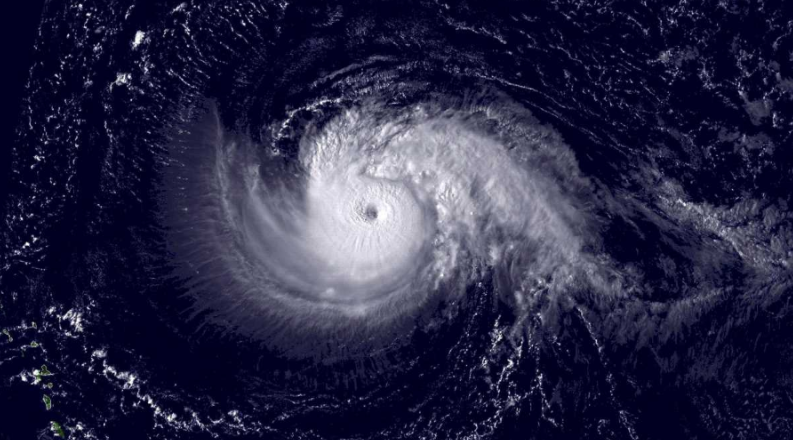Experts predict ‘slightly below average’ hurricane season

A NOAA satellite image of Hurricane Isabel taken on Sept. 10, 2003.
The 2017 Atlantic hurricane season will feature “slightly below average” activity, according to a prediction by atmospheric scientists.
The report issued by Colorado State University anticipates 11 named storms, including four hurricanes and two major hurricanes (cyclones that reach Category 3 strength or higher on the Saffir-Simpson Hurricane Wind Scale).
Released today, authors Dr. Phil Klotzbach and Michael M. Bell call for a 42 percent probability of at least one major hurricane striking the United States and a 24 percent chance of an Eastern seaboard strike.
Both percentages are below the yearly averages, including 52 percent for the United States and 31 percent for the Eastern seaboard.
The forecasters cite the cooling tropical Atlantic over the past month and the currently colder than normal North Atlantic as inhibiting factors that tend to “force atmospheric conditions that are less conducive for Atlantic hurricane formation and intensification.”
But they warn coastal residential that it only takes one hurricane striking the coast “to make it an active season for them, and they need to prepare the same for every season, regardless of how much activity is predicted.”
Some Atlantic basin seasons feature below average activity but still result in a devastating storm, like Hurricane Andrew in 1992, while others like 2010 — the third most active season on record — did not feature a hurricane making landfall.
The report cautions that while forecasting precision is impossible in April, the general public is curious about what’s possibly in store for them.
“We issue these forecasts to satisfy the curiosity of the general public and to bring attention to the hurricane problem. There is a general interest in knowing what the odds are for an active or inactive season,” the authors note. “One must remember that our forecasts are based on the premise that those global oceanic and atmospheric conditions which preceded comparatively active or inactive hurricane seasons in the past provide meaningful information about similar trends in future seasons.”
The 2017 Atlantic basin hurricane season begins on June 1 and continues through November 30. The first names include Arlene, Bret, Cindy, Don, Emily, Franklin, and Gert.
NOAA offers a comprehensive guide on storm preparations. The agency’s “Hurricane Preparedness Week” runs from May 7 through May 13.
WHYY is your source for fact-based, in-depth journalism and information. As a nonprofit organization, we rely on financial support from readers like you. Please give today.

